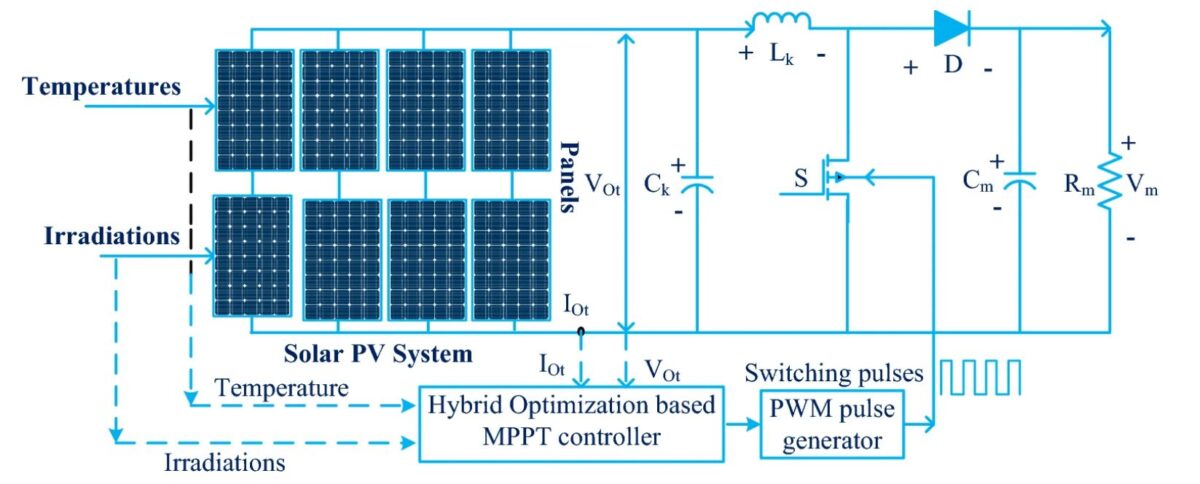Researchers at the Vellore Institute of Technology in India have conceived a new hybrid maximum power point tracker (MPPT) method to improve energy yield in PV systems operating under partial shading conditions.
The proposed technique utilizes an adaptive network-based fuzzy inference system (ANFIS), which is a special type of artificial neural network using the Takagi–Sugeno fuzzy inference system. The ANFIS is mainly intended to limit the disadvantages of fuzzy and neural network controllers, and in PV systems its goal is to reduce faults.
“The rules of ANFIS approximate the PV function from a nonlinear way to a linear way,” the scientists said. “Also, this network is used in energy management systems for the smooth operation of PV-fed batteries.”
The new method is also based on the use of controllers relying on the grey wolf optimization (GWO) algorithm, which mimics the social behavior of grey wolves in hunting.
“In this algorithm, there are four major parameters which are alpha, beta, delta, plus omega,” the research team noted. “The alpha (α) variable is illustrated as an optimal solution from the different possible solutions or leader wolf. Similarly, the beta (β), and delta (δ) constants are selected as the second, and third-best optimal solutions from the search space. The normal wolf solution is given by omega (ω).”
The proposed configuration, according to its creators, provides for optimized wolves’ exploration convergence ratio, while balancing their population and search for space. It also ensures that PV voltage is supplied to the power DC-DC converter for enhancing the PV source voltage to meet future microgrid voltages.
The scientists tested the performance of the MPPT technique and the associated solar system-fed converter circuit in a series of simulations conducted on a 3-diode model PV array via the Matlab-Simulink software. A source-side capacitor filtered the PV power ripples and protected the switches at rapid variations of supply voltages. A supply inductor charged the supply voltage of PV under the MOSFET forward bias condition and smoothened the supply voltage.
“The MOSFET is used because its properties are less gate-to-source voltage required for going to conduct, operates high efficiency at low rated voltages, consists of high source resistance to limit the gate current, quick working response, plus less possibility of damage,” the academics explained.
The simulation considered parameters such as oscillations across MPP, output power extraction, settling time of the MPP, dependency on the PV modeling, operating duty value of the converter, error finding accuracy of MPPT, algorithm complexity, tracking speed, periodic tuning required, and the number of sensing parameters utilized.
The research group claimed the new hybrid MPPT technique can provide “good results” when compared with other MPPT methods, with the PV source voltage rising from one level to another level. “The merits of the utilized converter are easy understanding, high reliability, plus lower price to implement,” it added.
The findings were introduced in the paper “A novel on design and implementation of hybrid MPPT controllers for solar PV systems under various partial shading conditions,” published in scientific reports.
This content is protected by copyright and may not be reused. If you want to cooperate with us and would like to reuse some of our content, please contact: editors@pv-magazine.com.









By submitting this form you agree to pv magazine using your data for the purposes of publishing your comment.
Your personal data will only be disclosed or otherwise transmitted to third parties for the purposes of spam filtering or if this is necessary for technical maintenance of the website. Any other transfer to third parties will not take place unless this is justified on the basis of applicable data protection regulations or if pv magazine is legally obliged to do so.
You may revoke this consent at any time with effect for the future, in which case your personal data will be deleted immediately. Otherwise, your data will be deleted if pv magazine has processed your request or the purpose of data storage is fulfilled.
Further information on data privacy can be found in our Data Protection Policy.